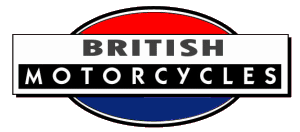


Jehu motorcycles were produced from 1901 to 1905 in Brook Street, Holborn, London.
1901 These makers started out by using Minerva, MMC and their own engines.
1903 They offered a 2hp model fitted with belt or chain drive and with or without a free engine facility. There were also 2½ hp, 2¾ hp and 3hp models. These were mainly produced as solos, but the largest also had a tandem forecar.
1904 The chain-drive transmissionn added a countershaft and clutch.
Reports from the 1903 Stanley Show:
The Jehu Motor Co., Ltd.
This company will have a show of ten machines, amongst which are the Jehu tandem 3 h.p. 75 by 80 chain-driven, Jehu free engine clutch, 23in. frame, two accumulators, two-way switch, 1½ gallons petrol capacity, 200 miles oil ditto, governor on exhaust valve by varying the lift, valve lifter on handle-bar, also clutch control and other controls as usual; a 3 h.p. safety (same specification as above), no forecarriage ; a 3 h.p. safety (same specification as above), with a belt-driven free engine clutch; a 2½ h.p. motor bicycle, 70 by 78, 80 lbs. compression, 1,800 revs., accelerated 2,000 revs., 2¾ h.p., 22in. frame, two accumulators, two-way switch. 1¼ gallons petrol capacity, 800 miles oil ditto, valve lifter on handle-bar, free engine clutch, chain drive, clutch control on handle-bar, usual controls, B. and B. carburetter, engine built in with bottom bracket, lug having a vertical rib. Crabbe front brake, Bowden ditto; also one 2 h.p., 66 by 70, 2,500 revs., chain drive, free engine clutch, Dinin accumulator, 20 ampéres, interrupter on handle-bar, valve lifter on ditto, and clutch control; 1½ gallons petrol capacity, 500 miles oil ditto, F.N. carburetter, throttle, and sparking advance.
The Motor Cycle, November 18th 1903
Stanley Show 1903
The Jehu Motor Co.
The makers of the Jehu have discarded their old pattern chain drive, which was by means of a single chain from the engine to the rear hub. They now have a countershaft on which the well-known Jehu clutch is fitted. This is operated by a small thumb lever on the handle-bar. The interior of the barrel to which the lever is attached is provided with a quick pitch screw throughout, and by means of the arrangement of levers, to which the Bowden wire is attached, very little power is required to put the clutch in. and out of action. From this counter-shaft and clutch another chain is carried to the rear hub, which is, Of course, fitted with a fixed wheel.
Both the single bicycles and the forecarriage design have on the end of the countershaft provision for a starting handle. By this means the engine can be set in motion before the machine is mounted. Two accumulators are now supplied, fitted in a neat wooden case at the rear of the seat-tube. The forecarriage design does not materially differ from other patterns of the same class. The side tubes extended to the back wheel are made under license from the Phoenix Motor Co., the engine in this case being 3 h.p. In the case of the forecarriage it can easily be seen that the starting handle is of immense advantage. (Stand 112.)
The Motor Cycle, 25th November 1903
Stanley Show 1903
Although the Jehu machine was a primitive and typical of the era, the mounting of the engine in a good position meant that the firm managed to survive for a few years, when many others failed.
Sources: Graces Guide, The Motor magazine.
If you have further information or a query related to this page, please contact us